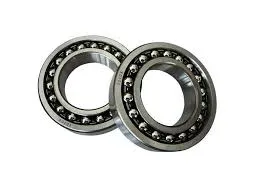
ئۆكتەبىر . 12, 2024 03:43 Back to list
Understanding Different Types of Taper Roller Bearings and Their Applications
Types of Taper Roller Bearings
Taper roller bearings are essential mechanical components used in various applications, primarily in automotive and industrial machinery. Their unique design allows them to handle both radial and axial loads, making them ideal for high-speed applications where durability and reliability are paramount. This article will explore the different types of taper roller bearings, their characteristics, and their applications.
Basic Design and Functionality
Taper roller bearings consist of inner and outer rings, a cage, and tapered rollers. The rollers are shaped like truncated cones, allowing them to distribute loads evenly across the contact surfaces. This design enables the bearings to accommodate both radial and axial forces, unlike conventional roller bearings that primarily handle radial loads. The rolling action significantly reduces friction, thereby increasing the efficiency of the machinery they're used in.
Types of Taper Roller Bearings
1. Single Row Taper Roller Bearings This is the most common type and consists of a single row of tapered rollers. They are designed to support moderate to high radial loads and axial loads in one direction. Single row taper roller bearings are widely used in applications such as wheel hubs in vehicles and gearboxes.
2. Double Row Taper Roller Bearings As the name suggests, these bearings feature two rows of tapered rollers, which allows them to handle higher radial and axial loads. They are often utilized in heavy machinery, such as construction equipment and mining machinery, where extreme loads are prevalent.
3. Four Row Taper Roller Bearings These bearings come equipped with four rows of tapered rollers, providing superior load-carrying capacity and rigidity. They are primarily used in rolling mills and heavy-duty applications requiring high precision and stability under immense loads.
types of taper roller bearing

4. Tapered Thrust Roller Bearings This type of taper roller bearing is designed specifically for axial load support. The bearing has a conical shape that allows it to manage substantial axial loads while providing stability. Tapered thrust roller bearings are often found in heavy machinery, such as presses and lathes.
5. Adapter Sleeve Taper Roller Bearings These are often used when easy installation and removal are necessary. The adapter sleeve allows bearings to be mounted on straight shafts without the need for precision fitting. They are commonly used in applications where the shaft material may expand or contract due to temperature changes.
Key Characteristics
The primary advantage of taper roller bearings lies in their design, which allows them to carry high radial and axial loads simultaneously. The tapered shape of the rollers facilitates proper alignment, ensuring smooth operation under varying load conditions. Additionally, taper roller bearings are available in various dimensions and configurations, allowing engineers to tailor them to specific application requirements.
Applications
Taper roller bearings are extensively used in the automotive industry, particularly in wheel hubs, transmissions, and differentials. Their ability to handle both radial and axial loads makes them ideal for high-speed vehicles, ensuring smooth performance and longevity. In industrial settings, they are found in construction equipment, mining machinery, and even in wind turbines, where they contribute to reliability and efficiency.
Conclusion
Taper roller bearings play a crucial role in the performance and reliability of various mechanical systems. With multiple types available, each designed to meet specific load and application requirements, these bearings are indispensable in modern engineering. Understanding the different types and their characteristics enables engineers and technicians to select the most suitable taper roller bearing for their specific needs, ensuring optimized performance and longevity in their applications. As technology advances, further innovations in taper roller bearing design are likely, promising even greater efficiency and durability in the future.
Latest news
-
Common Failures in Thrust Ball Bearings and Solutions
NewsAug.22,2025
-
How Tapered Roller Bearings Can Take Shock Loads
NewsAug.22,2025
-
Angular Bearings in High-Precision Spindles
NewsAug.22,2025
-
The Impact of Misalignment on Cylindrical Roller Bearing Performance
NewsAug.22,2025
-
The Role of Cage Design in Deep Groove Ball Bearing Durability
NewsAug.22,2025
-
The Impact of Material Quality on Machinery Bearings’ Lifespan
NewsAug.22,2025
